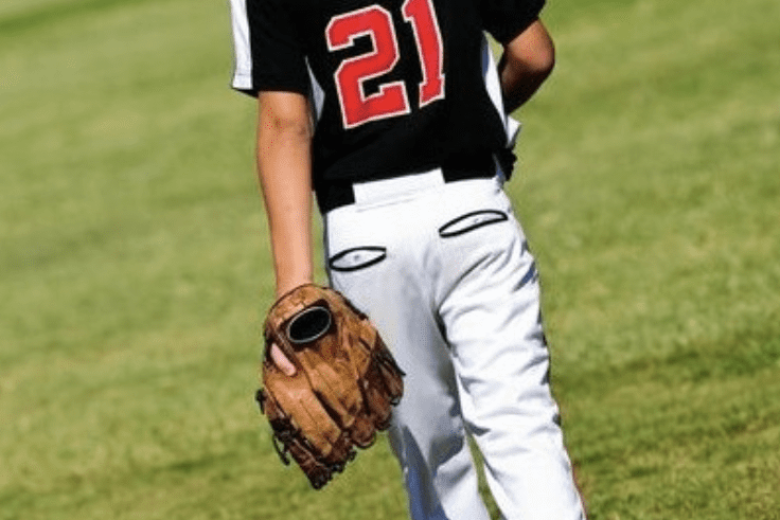Use our convenient online scheduler to book an appointment now.

He looked like any other 12 year old. Well, except for the way he was holding his right elbow…and his obvious pain. As I walked into the examining room and introduced myself, the tension was palpable. I had been here before. His mom was sitting in the corner quietly, almost not there. His dad was standing against the counter, arms crossed, stern, trying to fill the room. I smiled, sat down and started to ask questions of the young man. I like to get the history from the patient…if I can. They’re usually the best source of the information that I need.
In this case though, no matter what I asked, the answer came from behind me, on my left…from the boy’s father. There was an intensity in his father. I’ve seen that before, too. Now I was getting the picture.
“I see you play baseball?”
“You don’t understand. My boy doesn’t just play baseball…he’s a star.” Really, a “star”?, at age 12?
“What position do you play?”
“He’s a pitcher. Best pitcher in the league…65 mile an hour fastball”. He then added, “I’m sure it’s no big deal. Just a little sore. If your gonna make the Majors…you’ve gotta learn to suck it up. Told him he’s got to get a little tougher”. The “Majors”, seriously?
The father also bragged that his son pitched for multiple teams. He was sure to stress that one was a “travel” team. Multiple teams. Bad sign. When I brought up the possibility of poor throwing mechanics, I was assured…by the boy’s dad…that this was not possible. After all, his son pitched year-round and even more, when not competing, he had a pitching coach…”one of the best in the nation“. Year-round. Additional coaching. No rest. More bad signs.
The cause of the problem was becoming clearer.
I examined the boy’s arm. It was swollen…Not good. There was very limited motion…and the motion he had, was painful….Even worse.
I looked at the X-Rays that we had taken. I had expected…hoped…that these would be normal. Unfortunately I was wrong…very wrong.
Elbow overuse injuries in little leaguers are unfortunately common. Regrettably, they are becoming even more frequent. The thrower typically has pain and often reduced motion. It almost always can be attributed to throwing too much, with too little rest. On occasion, it can result from poor technique or potentially from throwing the wrong type of pitches for the child’s age. Often it is mild and with time off from throwing, it frequently resolves. In more serious cases, a loose fragment of bone at the joint surface can be present. Sometimes this will also heal with rest. Sometimes surgery is needed.
Even in these more serious cases, the X-ray findings are usually subtle…Not here.
When I looked at the young boy’s xrays, I couldn’t believe what I was seeing. I had to recheck the name on the study and make sure it was his. The growth plates were present, so the X-ray was a child’s. But the damage to the elbow was so extensive that it looked like the elbow of an elderly person…actually much worse than that.
Where healthy bones end in smooth round surfaces, this boys bones were flat and had large spurs. Normal joints have cartilage at the ends of the joint bones. This cartilage is not seen on X-rays, and so in a healthy, normal joint, a wide clear space is seen instead. There was very little space here. This was arthritis. Not just mild arthritis, but severe arthritis…and he was only twelve years old.
Arthritis of the elbow is rare, even in much older patients. It is unheard of in healthy kids…or at least it should be.
His pitching days were over…but he…and his dad…didn’t know it…not yet anyhow.
I knew this wasn’t going to be easy. Not because I had to deliver bad news. That’s difficult enough but that wasn’t my greatest concern. I suspected the boy already knew there was a serious problem with his elbow. In my experience, in cases like this, the patient is sometimes relieved that the diagnosis is serious. It explains their significant pain…it’s not just that they need to “get tougher”. It also finally gives them an excuse to rest…sometimes even a reason to quit the sport….sadly, that’s often a relief to the athlete.
No, the most difficult part wasn’t going to be telling the patient the problem. It wasn’t even going to be telling the young boy he was done playing. The most difficult part was going to be telling his dad.
Unfortunately, I wasn’t wrong…
“Sir, your son has a serious problem. He has severe arthritis in his elbow. This is incredibly uncommon in someone his age.”
“Well, how do we fix it. He’s got a game this weekend”
“It’s a lot more serious than that. Your son’s elbow can’t be cured. If he was older, his elbow might need to be replaced. Because of his young age, we wouldn’t do that now. But he may need that in the future. Now we can only treat the symptoms with medicines, rest and perhaps PT.”
“Well when’s he gonna be ready to play?”
It was clear my message wasn’t getting through….”Sir, your son’s elbow is that of an old man. There is no treatment that can make it any younger. He may not be able to throw again. And even if we somehow get it to feel better and he can throw, he shouldn’t. I’m sorry, but your son shouldn’t play baseball again.”
Here we go…“Son, grab your stuff, let’s go. This guy doesn’t know what he’s talking about. Don’t worry about it. You’ll be back playing in no time” The dad grabbed his boy and they left. The boy’s mother quietly walked out behind them.
I often wonder what happened to this boy. It’s been a long time and I can’t even remember his name and since that day, I’ve seen so many other kids just like him with severe overuse injuries. It seems like we’re in the midst of an epidemic (as noted here, here and here).
Somehow we’ve forgotten the reason our kids like to play sports – being part of a team, developing friendships, working toward a common goal, learning new skills, competing – HAVING FUN! And we’ve replaced their reasons with our goals – being the best, better than all their peers, getting a scholarship and even playing professional sports. Somehow we’ve forgotten that these kids are not simply little adults, but rather much different. Their minds and bodies have not fully developed. The pressure we have placed on them, both physically and mentally is often more than they can take…and they breakdown. Their bodies fail and they burnout. Not sure how or why it has gotten to this point, but I do know that as parents, coaches and doctors, we have a responsibility to STOP it.
Join our Mailing List
TCO provides patients with orthopedic problems the trusted resources and patient-centered advice they need to “Feel Better. Move Better. Be Better.”
© 2024 Town Center Orthopaedics | All Rights Reserved


